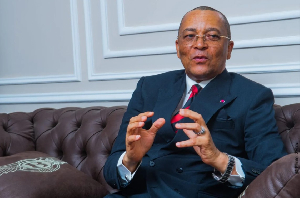Least I forget, a full-fledged ministerial government was established in Buea on May 15, 1958 for the entire territory of what used to be known as the Southern Cameroons. The government which was headed by Dr. EML Endeley, had in its set-up, a ministry in charge of local government affairs.
Endeley as Premier, held this ministry. It was when the second tier system of government was ushered into the governance system with the unique role of ensuring the success in the sharing of responsibilities between the central government and the local populations, a role that guaranteed the development of local areas through revenues derived from local sources.
Such local sources included market revenue, dog and bicycle licenses, liquor licenses, hawkers licenses to name but a few. The greater part of this revenue was drawn from poll tax in which individuals were assessed according to their declared incomes and levied accordingly. There were also subventions from the government.
The various units of the local government structure channeled this revenue in such areas as schools, health centres, construction of markets, roads and other infrastructures that rounded up the development agenda of their various areas.
We therefore had Native Authority (NA) schools, NA Health centres etc. The council had their treasurers who were answerable to the councils and from time to time the ministry of local government acted simply as a supervisory authority to ensure a transparent appropriation of revenue through regular checks from the government audit department.
The truth is that there was no such system in the former East Cameroon. First of all, there was no local government, nor was there any policy that granted any measure of autonomy to the local population. Not even the chiefs had any specific roles as auxiliaries of government in the day to day management of the state at the local level.
In the case of the former Southern Cameroons of semi- colonial experience of self-rule under the British colonial system, had prepared the minds of the leaders at the time, in such a way that the local government system had become a well-nourished and versed modalities of developmental politics which was the basis of the system itself.
Various local government units or councils showed proof of the advantages of the quasi sovereignty of the system with projects that came from independent sources, sourced by the self-efforts of the councils themselves.
For instance, the Tiko market which got burnt a few years ago was built by the Tiko Area Council as far back as 1958 from a loan obtained from the Barclays Bank.
One street in Tiko was tarred almost the same year. Several other examples can illustrate in other councils throughout the territory of the former Southern Cameroons to justify the genuine need for decentralization.
The local government, or decentralized governance system which took several years to put in place ahead of independence, was shattered by a simply presidential decree within a few weeks.
Now, it takes only lip-service, delaying tactics and bad faith to restore it, giving one lame excuse after the other, because those at the top strongly believe they will be deprived of some gains accruing to them under the centralized system. There lie the pains of decentralization.
It may not come at all, unless something happens and that something escapes my mind for now.
Opinions of Thursday, 21 August 2014
Auteur: The Sun Newspaper














